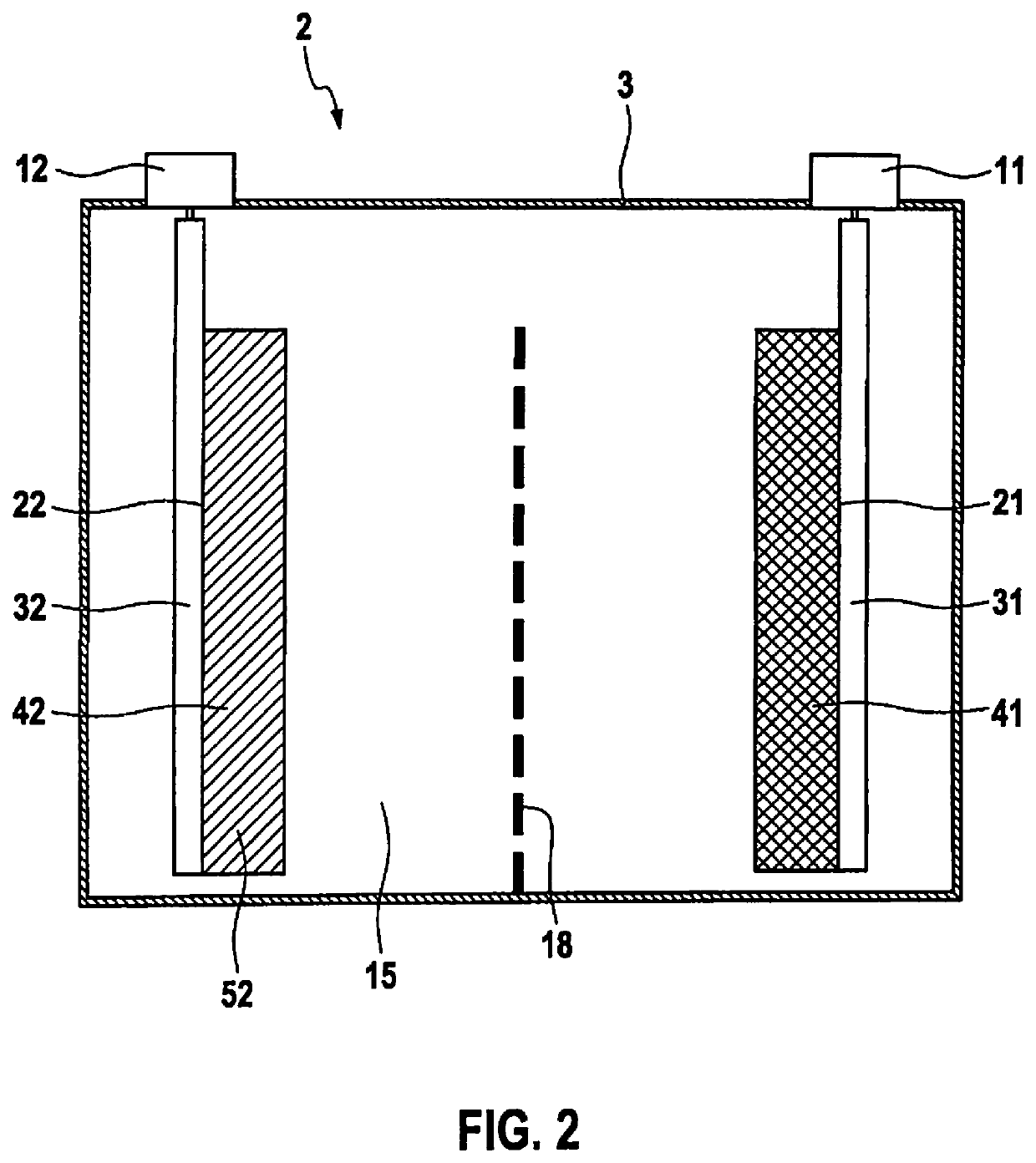Active material for a positive electrode of a battery cell, positive electrode, and battery cell
a technology of active materials and battery cells, applied in cell components, electrochemical generators, transportation and packaging, etc., can solve the problems of significant loss of service life and voltage fade, and achieve the effect of stable voltage, significant reduction of voltage and capacity losses, and stable capacity of lithium-ion battery cells
- Summary
- Abstract
- Description
- Claims
- Application Information
AI Technical Summary
Benefits of technology
Problems solved by technology
Method used
Image
Examples
Embodiment Construction
[0041]A battery cell 2 is schematically illustrated in FIG. 1. Battery cell 2 includes a cell housing 3 having a prismatic design, in the present case a cuboidal design. In the present case, cell housing 3 has an electrically conductive design and is made of aluminum, for example. However, cell housing 3 may also be made of an electrically insulating material, for example plastic.
[0042]Battery cell 2 includes a negative terminal 11 and a positive terminal 12. A voltage provided by battery cell 2 may be tapped via terminals 11, 12. In addition, battery cell 2 may also be charged via terminals 11, 12. Terminals 11, 12 are situated spaced apart from one another on a top surface of prismatic cell housing 3.
[0043]An electrode winding which includes two electrodes, namely, a negative electrode 21 and a positive electrode 22, is situated within cell housing 3 of battery cell 2. Negative electrode 21 and positive electrode 22 each have a foil-like design, and are wound to form an electrode ...
PUM
| Property | Measurement | Unit |
|---|---|---|
| electrical energy | aaaaa | aaaaa |
| chemical reaction energy | aaaaa | aaaaa |
| energy densities | aaaaa | aaaaa |
Abstract
Description
Claims
Application Information
 Login to View More
Login to View More - R&D
- Intellectual Property
- Life Sciences
- Materials
- Tech Scout
- Unparalleled Data Quality
- Higher Quality Content
- 60% Fewer Hallucinations
Browse by: Latest US Patents, China's latest patents, Technical Efficacy Thesaurus, Application Domain, Technology Topic, Popular Technical Reports.
© 2025 PatSnap. All rights reserved.Legal|Privacy policy|Modern Slavery Act Transparency Statement|Sitemap|About US| Contact US: help@patsnap.com


